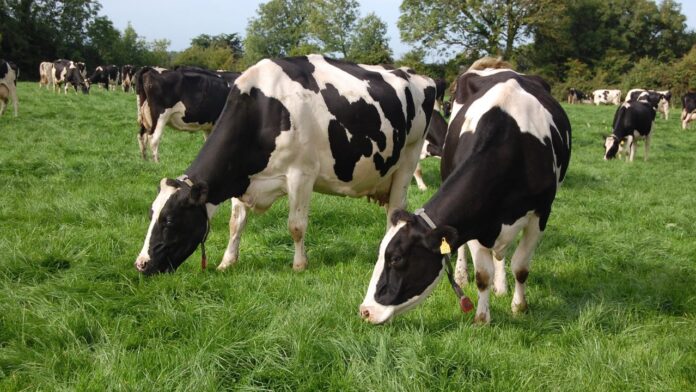Transition Cow Management
In this article, CAFRE’s Richard Gibson looks at transition cow management.
The transition period is from when the cow is dried off up to the calving period.
Problems that can arise from poor management during this period include:
- Udder oedema;
- Milk fever;
- Retained placenta (cleanings);
- Displaced abomasum (stomach);
- Laminitis (lameness);
- Metritis (uterus infections);
- Ketosis;
- Fatty liver syndrome.
All of the above result in lost profitability on farms. Poor management may also result in increased calf mortality due to difficult calvings and weak calves.
A short or absent dry period greatly reduces the number of secretory cells in the mammary gland and reduces milk lactation yields.
Research has shown that cows dry for over 60 days give approximately 125 kg more milk the following lactation, compared to cows dry for fewer than 40 days, which produce around 250 kg less milk the following lactation.
Body condition scoring
Ideally, dry cows off in condition score 3 and maintain at this condition score until calving. Where possible, group cows at drying off as fat, average or thin and restrict cows’ food intake of fat.
You can achieve this by offering animals straw or restricting their silage intake or grass intake. In contrast, cows which are thin should be offered high-quality silage/grass, plus a small quantity of concentrate to gain body condition score.
Nutrition
During the last four weeks of the dry period, many changes are needed in the nutrition and management of the dry cow.
It is important that the rumen bugs and rumen papillae in these cows are adapted to the feedstuffs being fed to milking cows.
Much of the early dry cow’s diet should comprise forage containing a high fibre content to keep the rumen expanded and working.
Ideally, a low potassium forage such as whole crop or specific dry cow silage are the best options.
The typical energy requirement at week -8 to -3 pre-calving is 90 MJ/day. During the close-up stage, the energy requirement increases to around 120 MJ/day. Therefore, you need to increase the diet nutrient density at this stage, especially due to the lower DM intake.
You should offer supplementation at this stage to meet the dry cow’s energy needs due to the rapidly growing calf.
To meet this demand in the Greenmount Campus herd, we offer dry cows 1.0 – 2.0 kg of a pre-calver feed containing 250 to 300 g digestible undegradable protein (DUP) freshweight/day.
Sources of DUP include protected soya or prairie meal. At this stage of the gestation cycle, the developing calf has a large nutrient demand for protein. Therefore, we offer cows a high protein concentrate daily.
Transition feeding – one week before calving
During this stage at the Greenmount Dairy herd, we feed dairy cows the same concentrates and forages as the milking cows.
This offers the opportunity to adapt the cow’s rumen to the higher levels of concentrate feeding after calving by introducing up to 2.0 kg of concentrate before calving.
Feeding the same diet before calving that is fed after calving aids the rumen adaptation and transition after calving and helps to reduce the stress of calving.
Housing
Ensure comfort in both cubicles and lying surface is at least similar to the milking herd. Other aspects to consider are stocking density (≤85%), feed space (90 cm/cow), cubicle hygiene and provision of clean water.
Furthermore, if practically possible, minimise the number of animal movements, particularly in the last ten days of pregnancy.
Research has shown that mixing pre-calving heifers with dry cows in the close-up period can lead to reduced bullying of heifers when entering the main herd, so this may be an option if practically feasible.
Also, ensure cows receive a foot trim at drying off and maintain footbathing during the dry period.
Summary points
- Body condition score (BCS) cows 8-10 weeks prior to drying off to achieve target BCS of 2.75 – 3.
- If possible, group cows into close and far off and feed accordingly, i.e., palatable bulky forage low in potassium.
- Feed a dry cow mineral;
- Ensure suitable dry cow accommodation to maximise cow comfort;
- Carry out foot trimming and continue to footbath;
- Minimise stress;
- Talk to your vet/nutritionist if transition diseases are an issue.
Other articles:





